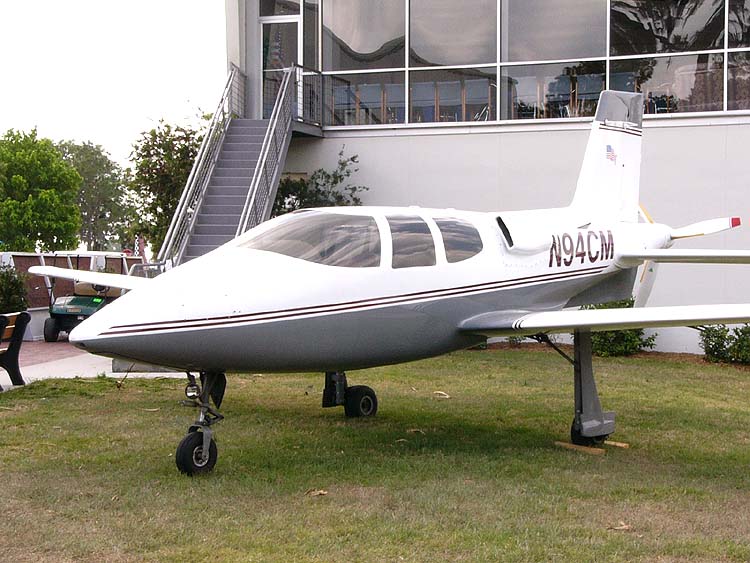However, you are a "Cirrus Criminal" (going with that metaphor) and bash them for EVERYTHING, even those things they do right. If you weren't so one-sided about this, we wouldn't even have these arguments.
No, I have a laundry list of things that they've done right and I've had lunch with Alan Klapmeier and told him as much a few years back:
-The BRS (great idea, but the application is a little flawed, that's all)
-The "crumple zones" under the seats are a wonderful idea and probably one of the reasons the mortality rate isn't even higher in Cirrus crashes.
-Most of the avionics are what I can only hope for as a GA pilot in almost any other aircraft
Those are just the ones that jump to my mind now as it has been a long day...I have six or seven, but those are the major points. It's not that I think they have not contributed a lot to the aviation industry, far from it, however the flaws with the aircraft outweigh the positives. I mean, honestly, the compressible material under the seats does not mean a lot if the seats are broken lose because the cockpit comes apart. What is bad is that many of these fatalities (if I had to give my educated opinion on the subject, I'd say 10-15%) could be prevented if the cockpit integrity had been given a little more thought and focus. That doesn't sound like a lot- under most circumstances in the world of injury prevention, that's a pretty laudable achievement actually- but I'm betting you money if you were in that 10-15% you'd thank whomever pushed for the changes that got you there.
And that right there is one of the big issues with the chute - It can't work if you don't pull the handle.
Right, which goes back to a problem in marketing- you market to people who think they are Maverick, things tend to go badly when you get into a flat spin. It's not a fault with the aircraft, but then again the misguided marketing of the aircraft is as much the responsibility of the company as the problems with the design.
But those same stall/spins are UNRECOVERABLE IN ANY AIRCRAFT, no matter whether it's been through spin testing or not!
Right, but this aircraft has a higher than normal tendency to encounter those sorts of situations. It's a combination of high performance and low experience that is- not to sound like a broken record- at the heart of the Cirrus marketing strategy.
I think your average 300 hour PPL is not going to recover from an unintentional spin at less than 3000 feet or so in ANY aircraft.
Point taken but it still doesn't mean you should put your faith in an aircraft that a USAF test pilot friend of mine described as the sort of plane "...you treat like a rattlesnake. If you give it more respect than most and don't get too close, you're golden, but look at her cross-eyed, don't give her respect or don't pay attention and you are in for a nasty bite."
So, clearly, the problem here is the PILOT, not the AIRPLANE.
It's a bit of both.
But you're blaming the airplane, when it's the ONLY one that has a backup method to maybe survive a situation that no halfway-decent pilot is going to get into in the first place.
Two things.
1. It's not the
only one with the BRS fitted to it (another little "fact" I hear the Cirrus reps like to tell, so I won't fault you for repeating it), nor was it even the first. It was an idea they took from hang gliders and ultralights and scaled it up. Now it is one of the only ones with it considered standard, but the reasons for that are arguable but given that I like Mr. Klapmeier and respect the hell out of him for his efforts to make a safer plane (even if the end result has an appalling safety record...several of the subsystems in the aircraft should be considered standards by which any future design should be measured), I will take him at his word that it wasn't an engineering shortcut.
2. Everyone makes mistakes, even you and even me. Everyone. No one is above a moment of inattention. It's this "I'm better than that guy" or "He's a ****ty pilot and I'm not because...." attitude that gets people into situations where other egotistical pilots describe THEM in those terms when they are no longer around to defend themselves.
I'm not "blaming the airplane" solely and completely. It's a combination of factors and if you'd stop being so closed-minded and stop making assumptions about what I believe or don't believe you might see that most of my arguments frankly state that it's the fact the aircraft has some pretty glaring problems (and most of my concern is actually with things that have zero to do with the actual performance since I'm not an aeronautical engineer, I'm an injury prevention researcher), which are exacerbated by low hour pilots often with egos that would make Chuck Yeager look like Gandhi being seduced by Cirrus marketing these aircraft as if they are docile kittens with an easy "out" if you get into trouble. It's a bad theory that is getting a lot of us killed, like advocating we train people for their PPL in a Mooney M20K. THAT is what I am saying. I find it disgusting that you want to put the profits of a company ahead of the lives of our friends, colleagues and their families.
I'm not the "Cirrus Police"
Could have fooled me.
(That type has the distinction of having a 100% kill rate in the NTSB database)
You beat me to that one. I was going to make that point myself.

 .
.


